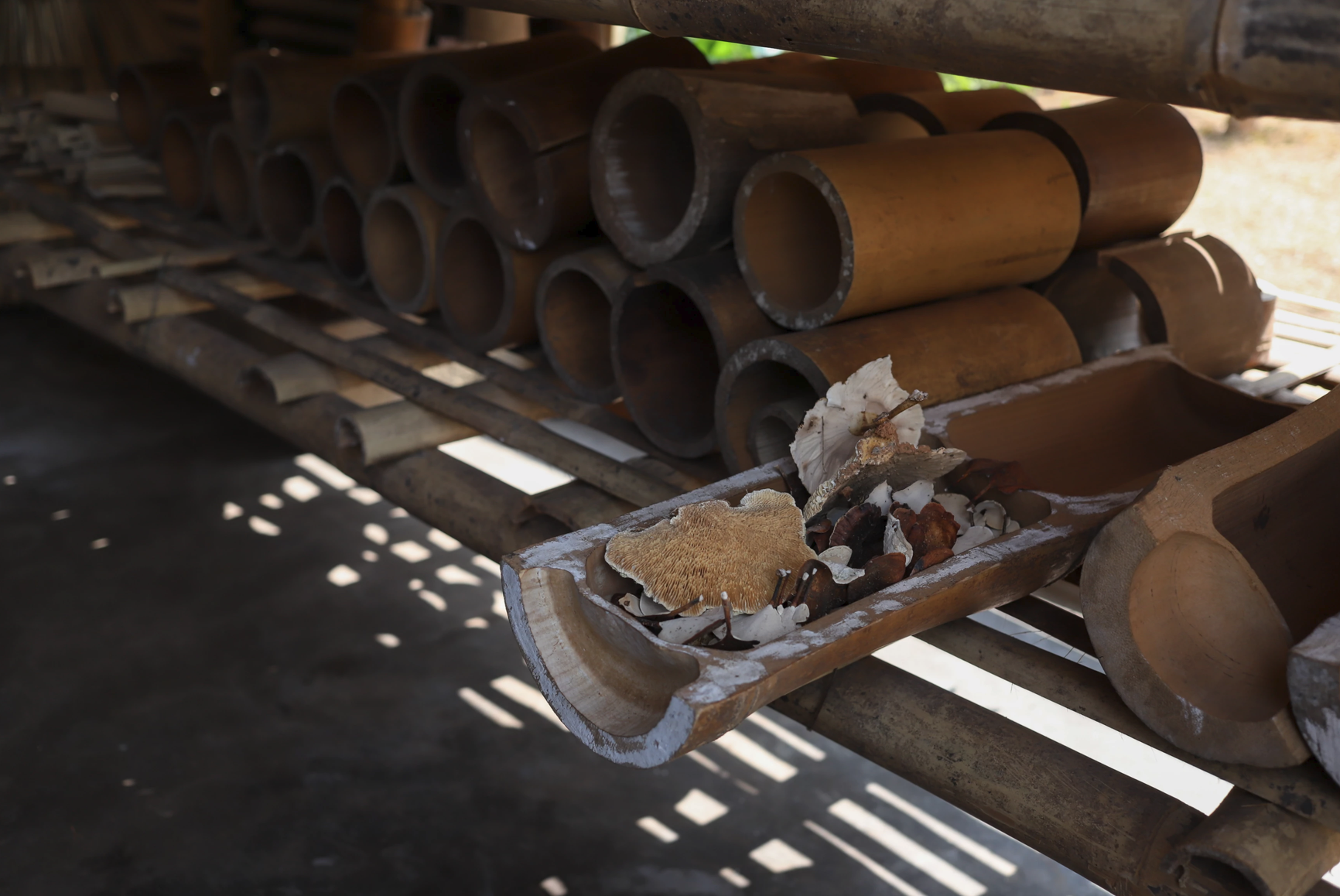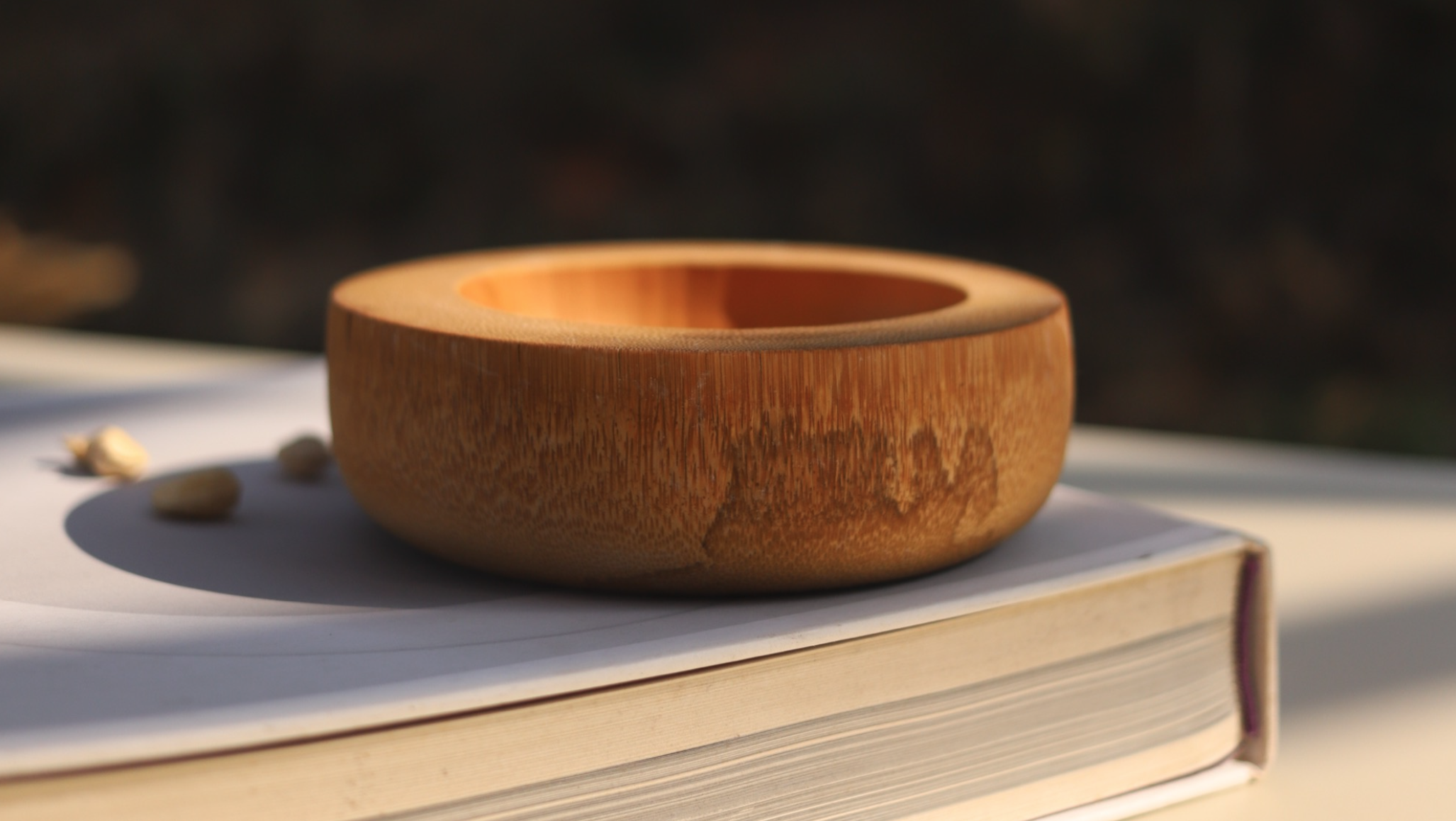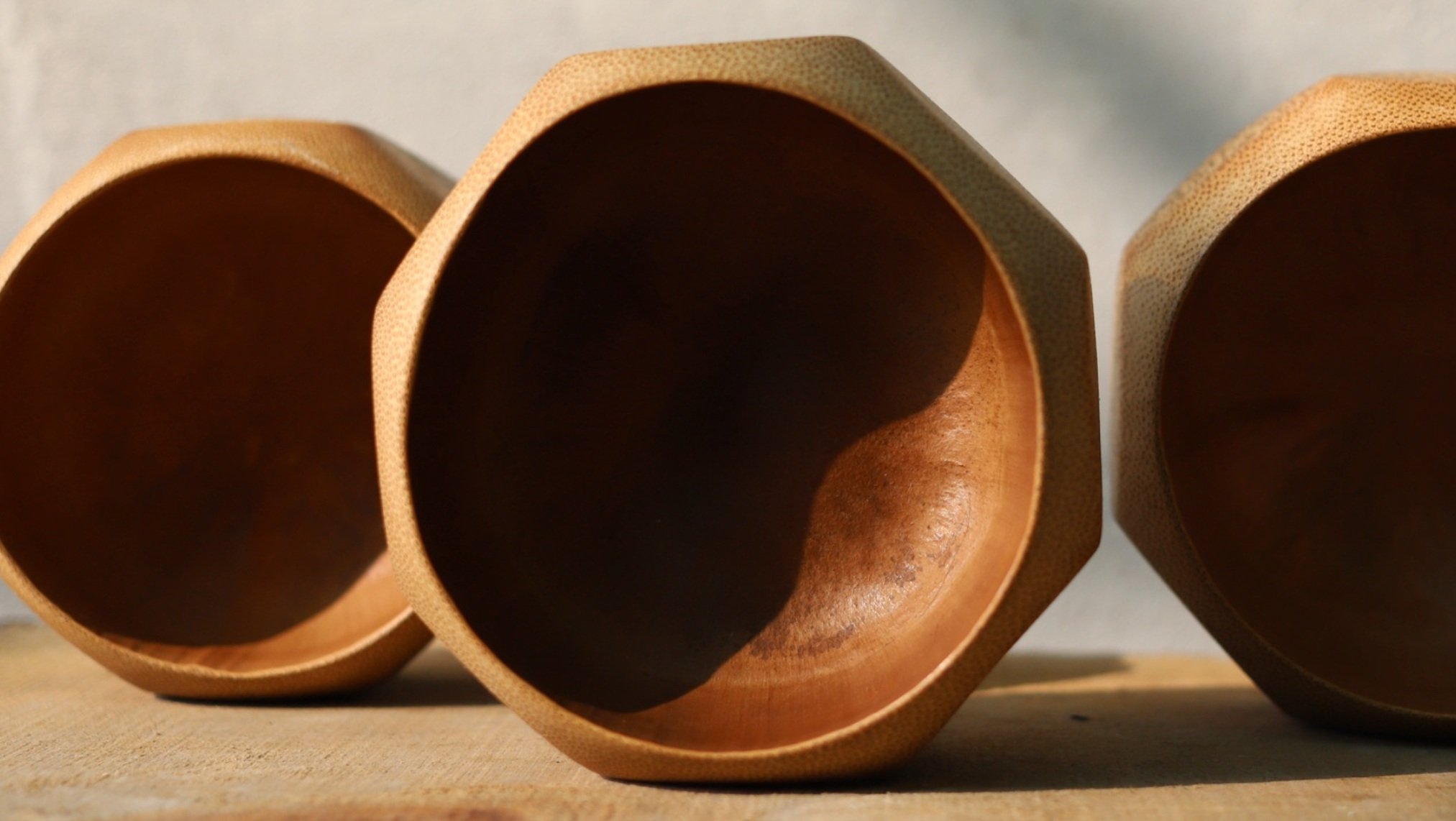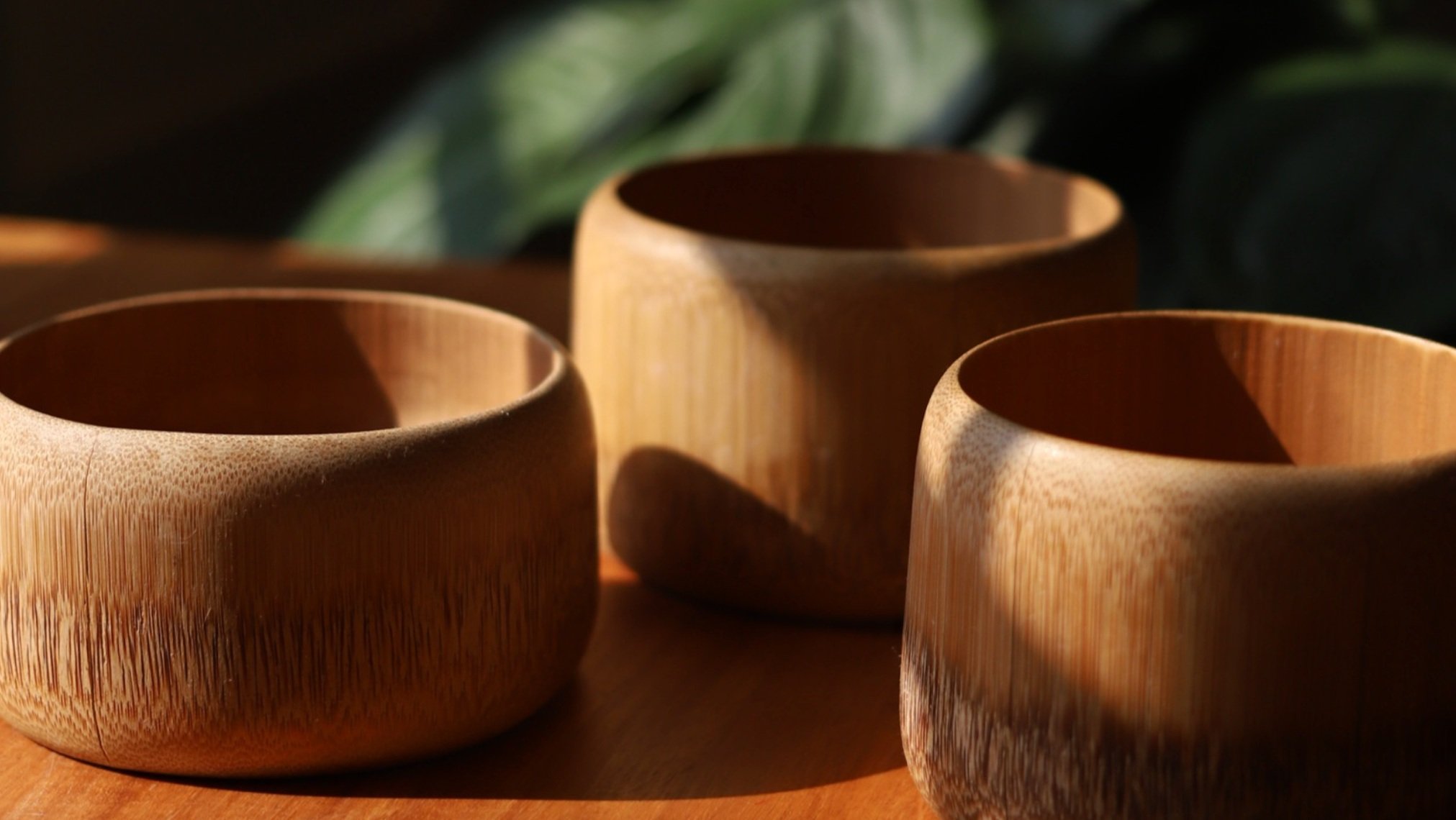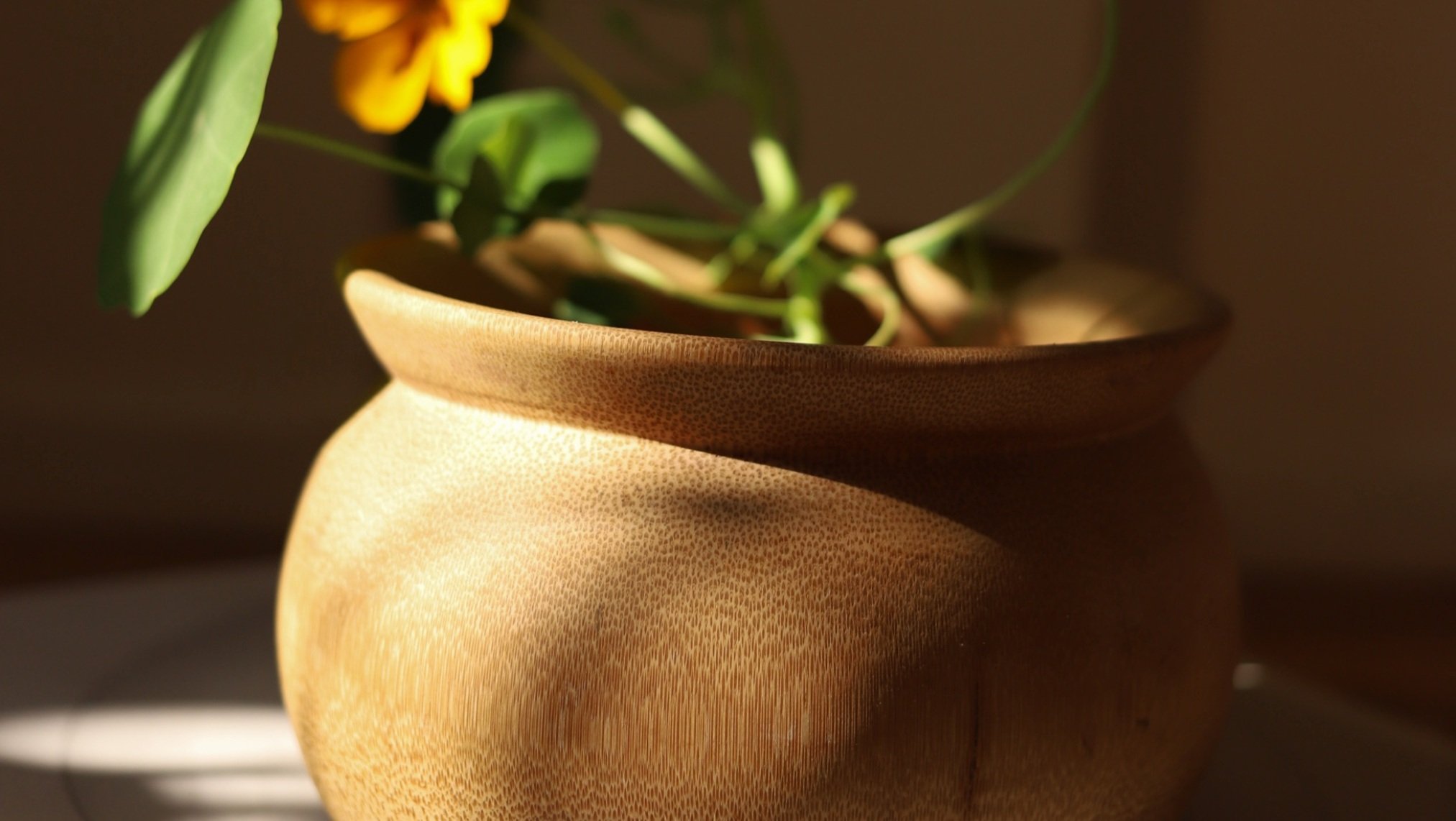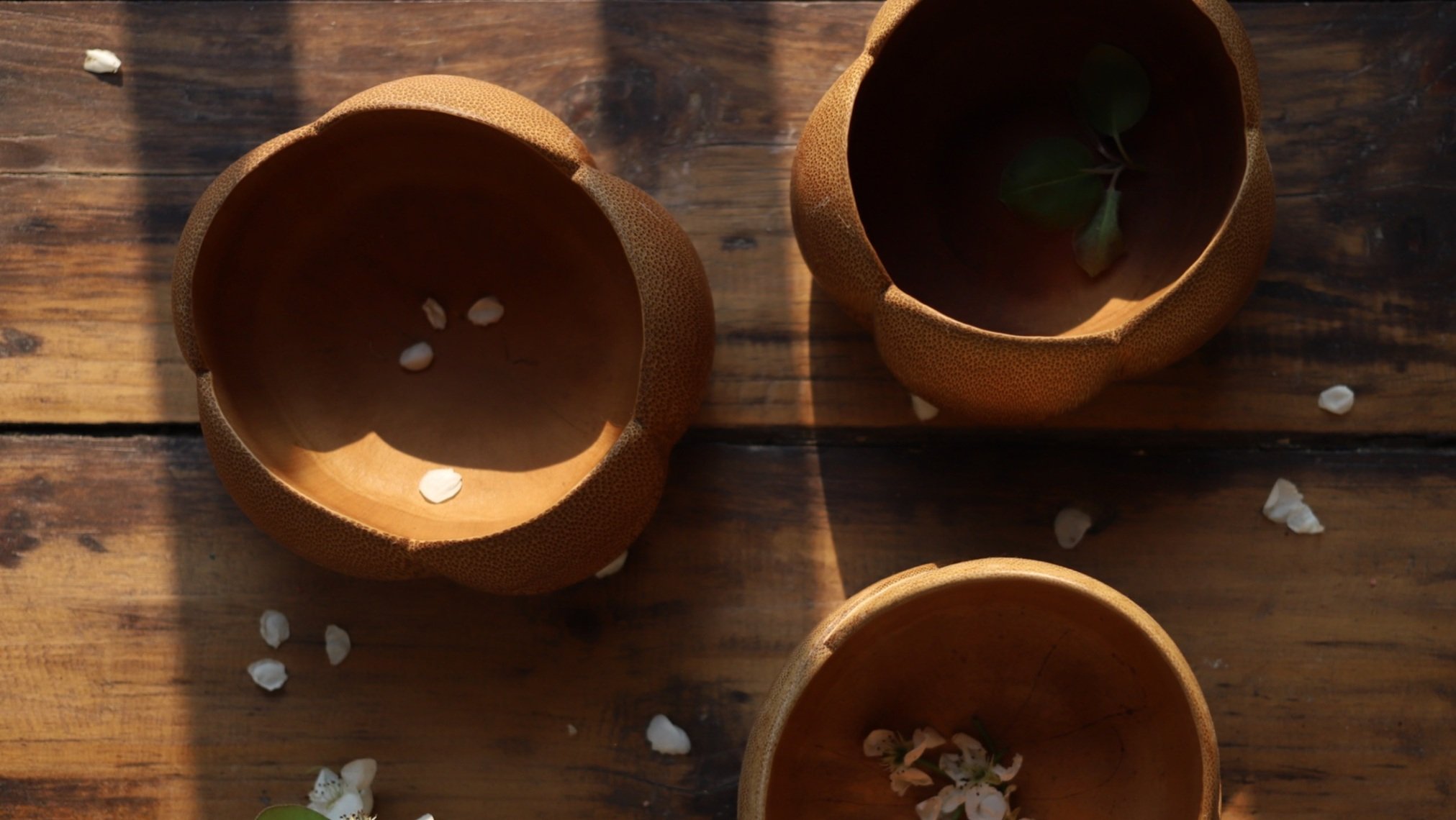Featured: Baa
Baa has slowed Kriya’s world down. It has eased her into the forest life where everything happens at nature’s pace, and nothing can be rushed. She set out to find baa, instead she found herself.
Words by Priti Rao. Photography by Menty Jamir.
When Kriya first moved to her mother’s six-acre farm in Ri Bhoi, she was taken by the use of baa (bamboo in Assamese) on the farm. She realised that unlike her time in the city where she had to scout for materials at the weekly local markets and hardware stores, here on the farm the materials were right in front of her. At first the bamboo growing in the farm seemed like a vegetable; raw, still and not fully ready for her to engage with. But when she began her journey with it, that at times seemed long and demanding, it began to respond to her. It took her time to learn how to live with it, work with it.
“You have to meet your bamboo, care for it, live with it and see it through.”
Bamboo has revealed nature for Kriya. She feels that working with bamboo has made her aware of its living environment and helped her establish a deeper connection with it. She says it’s almost like caring for a baby. In the monsoons sometimes, when pests have a bite at it, Kriya persists with it. And much as you avoid putting chemicals on your baby, Kriya avoids putting it on her bamboo. Her house is full of bamboo experiments, in its various stages. She feels bamboo has tested her a lot, and sometimes even her family don’t fully understand her obsession with it. She laughs that her husband and daughter sometimes joke that she loves her bamboo more than she loves them.
Collecting nature
Kriya Rynjah grew up in Shillong, a cloud-capped hill station in Northeast India. Growing up in the 80s, Kriya fondly remembers foraging trips with her little sister. Together they walked across bamboo groves, climbed trees and stole oranges from people’s backyards.
“There are so many shapes, colours and textures in a patch, the size of one’s palm”
All through her years growing up, Kriya loved collecting nature. Sometimes she would find a piece of thorn and bring it home. Whilst on a walk she would slow down to pick up stones. Her friends brought her rare rocks for presents. These days her five-year-old daughter Parvati and her friends add to her collection of fallen leaves and blooms. The collection has grown to hold mushrooms, twigs, fruits and seeds. Even abandoned bird nests and storm-felled beehives have made their way to it. In each of these items she spots pattern and texture. She collects these gifts of nature with the belief that someday she will do something with them. They bring back fond memories of the place, but more importantly like a scientist, Kriya likes to observe them through the changing seasons. Sometimes these very discoveries guide her design and making process.
From growing up in an all-round creative environment, Kriya eventually landed at the Birmingham Institute of Art and Design in the UK to study industrial design. Here, she learnt the concept of structuring, shaping a product from an idea. She remembers even at the design school she was interested in the process much more than the product. The fact that no matter what the design challenge, there was always a workaround to be found.
Designing with bamboo
“I like to make what nobody has made before,” says Kriya. She wants her design to be distinct, and works to show off the materials. Kriya’s designs are inspired by shapes and forms of nature, and she believes her job as a designer is to enhance the inherent structure of the material. Thus in designing baa objects, Kriya does not impose her vision as a designer. Instead, she allows herself to be gently guided by it. For Kriya, form follows bamboo. She believes it is alive, and tells her how it wants to be shaped. It is almost the third person in the room, along with her and her artisan, Dhane. She thinks each object is a collaboration between her, the artisan and the bamboo. Together they give it shape, and meaning. Transforming it from a living material to a living object, each showing off its natural beauty and blemishes.
“I work with a lot of love, a lot of heart in each object.”
Kriya believes that there is something magical in taking something from the wild, and shaping it with one’s own bare hands. “It empowers you. Gives you dignity.” She feels good each time she sculpts a new object. She says it’s amazing to eat out of a bowl that she has carved herself. The bamboo further adds to the taste of the food with its subtle flavour of the forest.
Making responsibly
Kriya works only with natural materials. She believes there is no way to fast track whilst working with such materials. One needs to slow down, connect with it and see it through. Each of Kriya’s works takes up to a year to make by the time she’s done with soaking it in spring water to remove the starch, hand sculpting it to give it shape, and curing it in sunshine and shade to give it lasting qualities.
She believes as a maker she needs to consume materials responsibly. Her bamboo which comes from the borders of India and Bhutan is harvested only once a year. She sources her materials from homegrown forests, and forest fallen produce. She believes that even when one forages, one has to do so responsibly. At the end of the day, those very materials become nutrients for the soil. As a designer Kriya constantly questions herself: “What is the right scale? How might one preserve quality in every object? How might one make responsibly?”
“My tasting spoon may not save the earth, but it’s definitely not going to make it worse. At the end of life it will nourish a part of the earth where it’s put to rest.”
She also believes that bamboo is the material of the future. She wants designers to make like they give a damn. She thinks if people are willing to slow down and not put it through manufacturing processes or mass production, then we may stand a chance. She strongly feels that bamboo is extensively misused today, altered by chemicals, whilst still being marketed as a green material. Kriya takes great care to make all her products 100% bio-based. She doesn't like to alter their natural properties by applying non bio-based resins, glues, and artificial preservatives. Instead she uses age-old techniques such as smoking with pinewood and juniper, finishing with Tung tree oil to preserve the natural properties of the bamboo.
Objects of time
Kriya wants people who acquire her works to know that context matters. It matters where the materials are grown, how they are harvested, cared for and made. She wants discerning consumers to look for bamboo that looks natural. She feels her objects are a natural extension of the food one eats, or the wellness and beauty one aspires to. They are designed as companions for life, and if well cared for can go on to become heirlooms that get passed on from generation to generation.
“Unlike machine-made objects, handmade objects carry the emotions of the maker.”
In creating her works, she tunes into the pace of nature, creating timeless products that take their time to be seasoned. Thus her creations can be thought of as objects of time.
View Kriya Rynjah catalogue here











